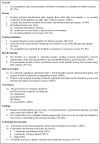Community engagement for big epidemiology: deliberative democracy as a tool
- PMID: 25563457
- PMCID: PMC4282883
- DOI: 10.3390/jpm4040459
Community engagement for big epidemiology: deliberative democracy as a tool
Abstract
Public trust is critical in any project requiring significant public support, both in monetary terms and to encourage participation. The research community has widely recognized the centrality of public trust, garnered through community consultation, to the success of large-scale epidemiology. This paper examines the potential utility of the deliberative democracy methodology within the public health research setting. A deliberative democracy event was undertaken in Tasmania, Australia, as part of a wider program of community consultation regarding the potential development of a Tasmanian Biobank. Twenty-five Tasmanians of diverse backgrounds participated in two weekends of deliberation; involving elements of information gathering; discussion; identification of issues and formation of group resolutions. Participants demonstrated strong support for a Tasmanian Biobank and their deliberations resulted in specific proposals in relation to consent; privacy; return of results; governance; funding; and, commercialization and benefit sharing. They exhibited a high degree of satisfaction with the event, and confidence in the outcomes. Deliberative democracy methodology is a useful tool for community engagement that addresses some of the limitations of traditional consultation methods.
Figures
References
-
- Rychetnik L., Carter S.M., Abelson J., Thornton H., Barratt A., Entwistle V.A., Mackenzie G., Salkeld G., Glasziou P. Enhancing citizen engagement in cancer screening through deliberative democracy. J. Natl. Cancer Inst. 2013;105:380–386. - PubMed
-
- Hoeyer K. The ethics of research biobanking: A critical review of the literature. Biotechnol. Genet. Eng. Rev. 2008;25:429–452. - PubMed
LinkOut - more resources
Full Text Sources
Other Literature Sources
Molecular Biology Databases




